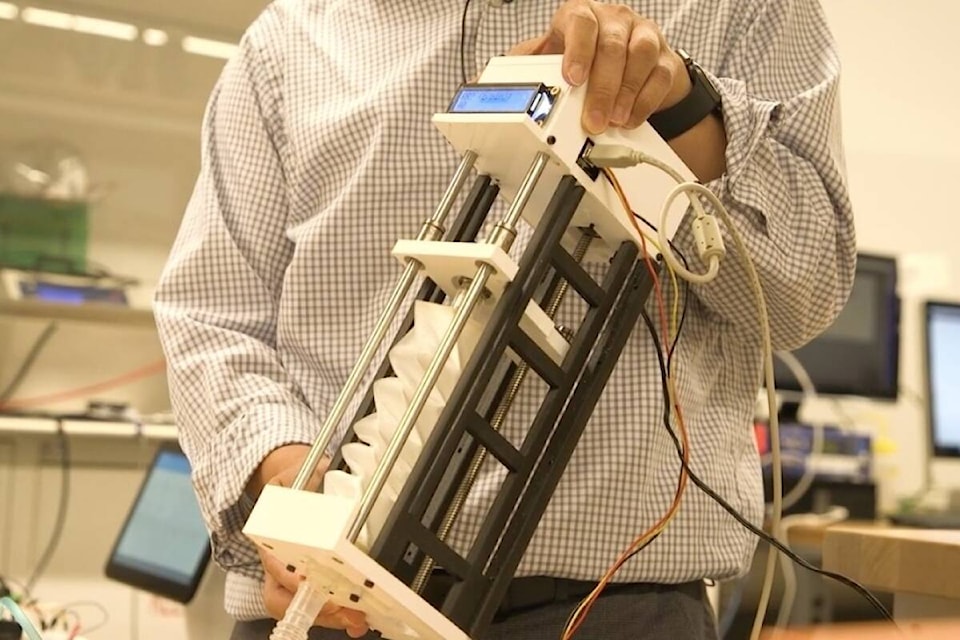In a Surrey lab, Simon Fraser University researchers replicated the folding art of origami to create 3D-printable technologies to aid in the fight against COVID-19.
A 3D-printed ventilator they’ve come up involves an origami-style tube, in an effort to reduce production costs.
The portable mechanical ventilator aims to assist a person’s breathing without the use of a conventional bag-valve mask, or BVM.
At SFU Surrey, associate professor Woo Soo Kim oversees work in the Additive Manufacturing Lab.
“In our portable origami ventilator, more than 95 per cent of components can be 3D printable, that’s why it is really cost-efficient,” Kim said in a news release posted to the website sfu.ca. “Other portable ventilators can cost over $2,000, but our 3D-printed ventilator can be produced for about $200.”
The portable ventilator is perfect for use in long-term care homes or in remote rural areas and developing countries, says Kim, who talks about the technology in video on SFU’s YouTube channel.
^^ Here's the portable mechanical ventilator at work. @sfusurrey
— Tom Zillich (@TomZillich) September 9, 2021
STORY: https://t.co/fDUmmR63Ee pic.twitter.com/zQdzFcfkDg
The SFU team has partnered with Vancouver-based ventilator manufacturer Pantheon Design and Delta-based 3D-printing company Tinkerine, with support from the Alliance program of the Natural Sciences and Engineering Research Council of Canada (NSERC). They also seek “further investment and development partners with a goal of mass production.”
In related work, Kim is also developing and patenting 3D origami dry electrodes that can be used to monitor patient health. This technology is under the same intellectual property strategy of 3D-printed origami technologies, a news release explains. The dry electrodes can detect and monitor physiological signals, such as heartbeat, breathing, temperature and muscle movements, all with the touch of the 3D origami dry electrodes.
In the future, Kim envisions that this technology could be used to assist doctors and nurses by allowing them to assess patients’ health remotely through a robot helper.
The humanoid robot would also be able to monitor oxygen levels – useful in cases where a patient has developed severe COVID-19. The data can be viewed in real-time on the robot’s monitor or sent directly to the healthcare provider.
“The dry electrode doesn’t need to be equipped with the sensing robot – it can be used in a hospital setting to replace the wet gel type electrode for electrophysiology such as electrocardiogram or blood pressure measurement applications,” Kim explained. “Dry electrodes are just one of the technologies under this portfolio of 3D origami technologies we are developing here at SFU.”
tom.zillich@surreynowleader.com
Like us on Facebook Follow us on Instagram and follow Tom on Twitter
